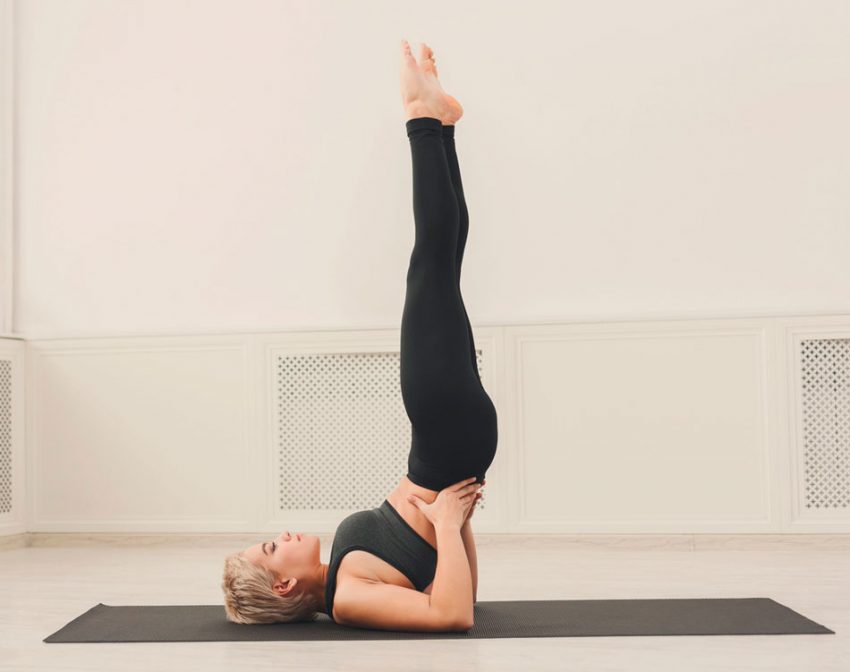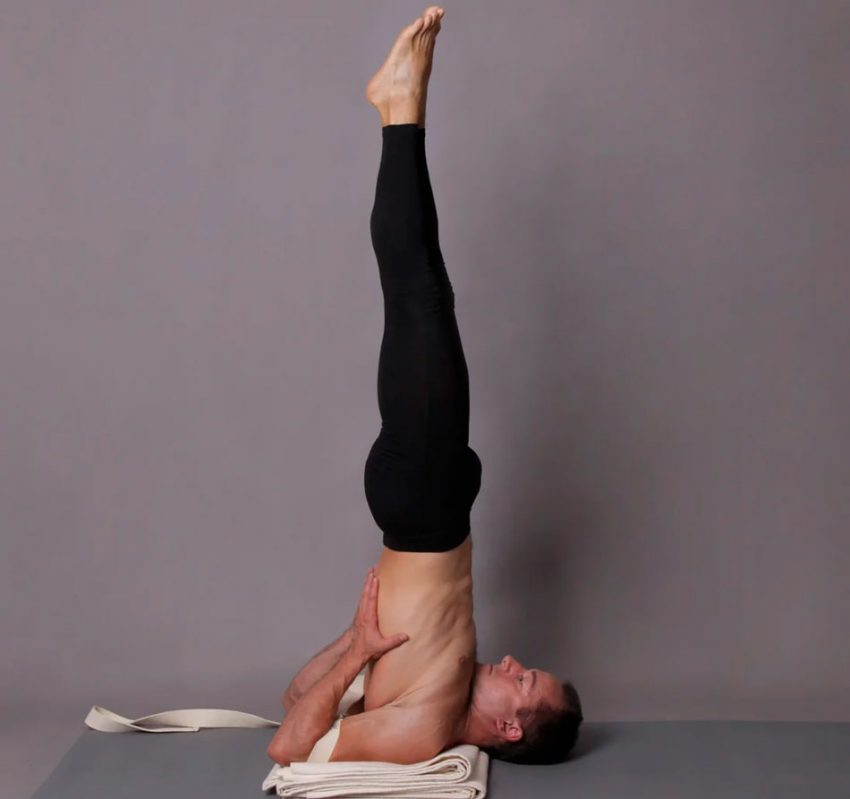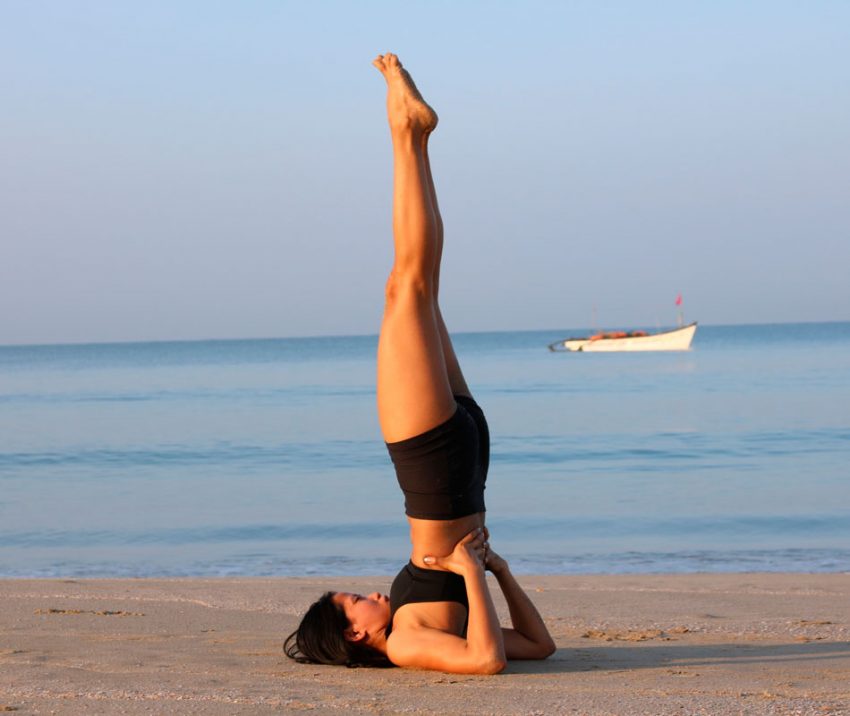The gymnastic shoulderstand, or birch, is a popular flexibility exercise. It develops the mobility of the spine, helps to strengthen the muscles of the abdomen and back, and is good for stretching. But movement is quite traumatic, not available to all people due to anatomical features and injuries, and is not downright mandatory for health and beauty. But it carries a certain benefit to the body.
The benefits of birch exercise for women

The exercise is known as one of the yoga asanas recommended for women – Sarvangasana. On days other than the menstrual cycle, the practitioner had to do Birch to achieve better health:
- increasing the flexibility and mobility of the spine in the thoracic region;
- relieving excessive tension from the muscles of the neck;
- ensuring the outflow of blood from the legs and preventing varicose veins;
- giving tone to stabilizing muscles;
- strengthening the press
- There is an opinion that “birch” is harmful to the pelvic organs, but this is not so. In fact, exercise improves blood circulation well, it is simply not recommended to do it during your period, so as not to cause additional discomfort.
The benefits of birch exercise for men

“Birch” is performed not only by women. For men, exercise is also useful:
- serves as the prevention of prostatitis by improving blood circulation;
- helps to reduce the risk of hemorrhoids during exercise;
- improves the mobility of the spine;
- strengthens the muscles of the core, especially if the exit to the “birch” is done technically correctly, due to the work of the press, and not with the help of a swing and lifting of the legs.
Contraindications
The exercise is gymnastic and is performed without weights, but it must be borne in mind that the entire body weight will be on the shoulder blades and the cervical spine. Therefore, there are a number of contraindications:
- hernia and protrusion in the cervical spine;
- pinched nerves;
- pain in their trapeziums due to improper posture and sedentary work;
- headaches and migraines;
- thrombosis;
- heart disease, high blood pressure;
- diseases of the thyroid gland.
Women should not perform a birch tree during pregnancy, menstruation and while breastfeeding. Men – during an exacerbation of prostatitis. Both sexes should refrain from exercise if there are no diseases, but the general physical condition leaves much to be desired – dizzy, fatigue is felt.
Execution technique

Unlike conventional gymnastic exercises, where muscles contract in dynamics, here it is necessary to fully concentrate on their contraction in a static position, breathing and other nuances.
- Lie on the floor, pull your stomach so that it is in good shape, but not tense to the limit;
- Bend your knees slightly, place your heels on the floor;
- Stretch your arms along the body and relax your neck;
- Pull the pelvic bones to the lower ribs, contract the abs;
- Tear the pelvis off the floor, tighten the abs more, put your hands on the floor;
- Straighten your legs up, perpendicular to the floor, stand on your shoulder blades;
- Calm your breathing so that it does not interfere with standing on your shoulder blades;
- Take calm breaths in and out;
- Stay in the birch position for 5-6 breaths or longer;
- Straining your abs, lower yourself to the starting position vertebra by vertebra.
You can find recommendations to make a birch tree by using your hands and using your hands and feet. In this case, the exercise will be technically easier, a significant part of the task will be removed precisely due to this emphasis.



